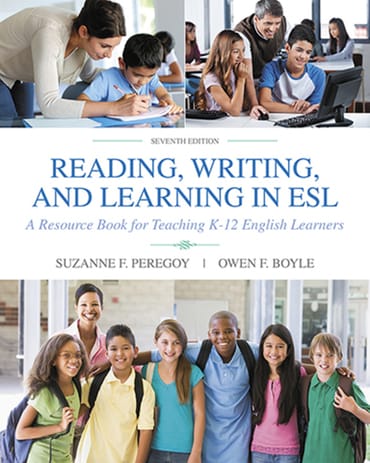Switch content of the page by the Role togglethe content would be changed according to the role

Reading, Writing and Learning in ESL: A Resource Book for Teaching K-12 English Learners, 7th edition
Published by Pearson (January 22, 2016) © 2017
- Suzanne F. Peregoy
- Owen F. Boyle San Jose State University
12-month access eTextbook
C$54.99
ISBN-13: 9780134037141
Reading, Writing and Learning in ESL: A Resource Book for Teaching K-12 English Learners
Published 2016
Need help? Get in touch